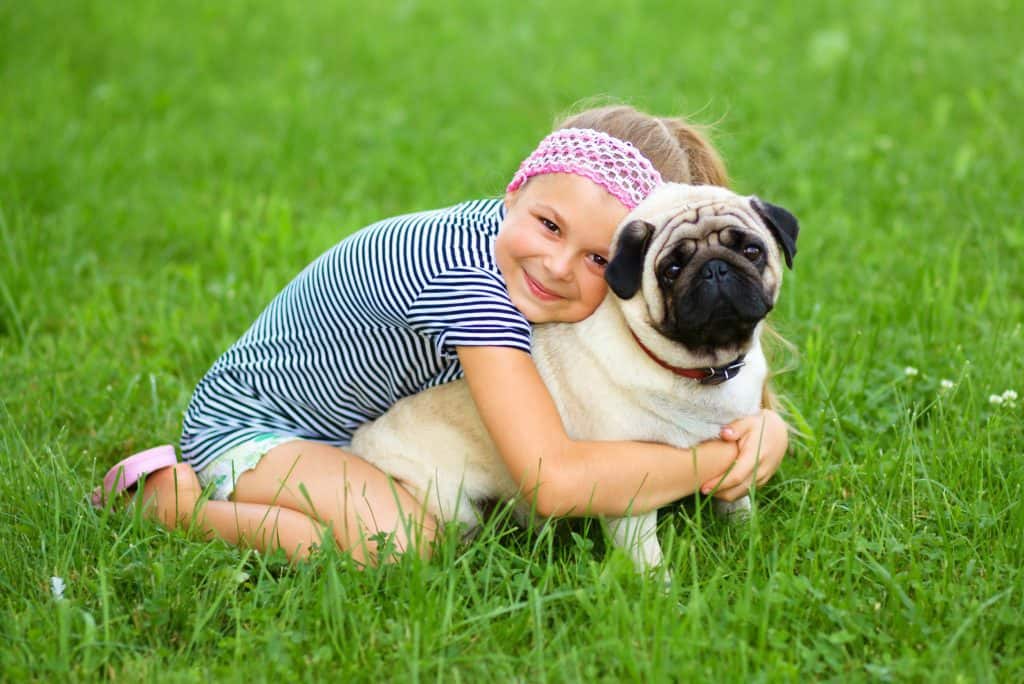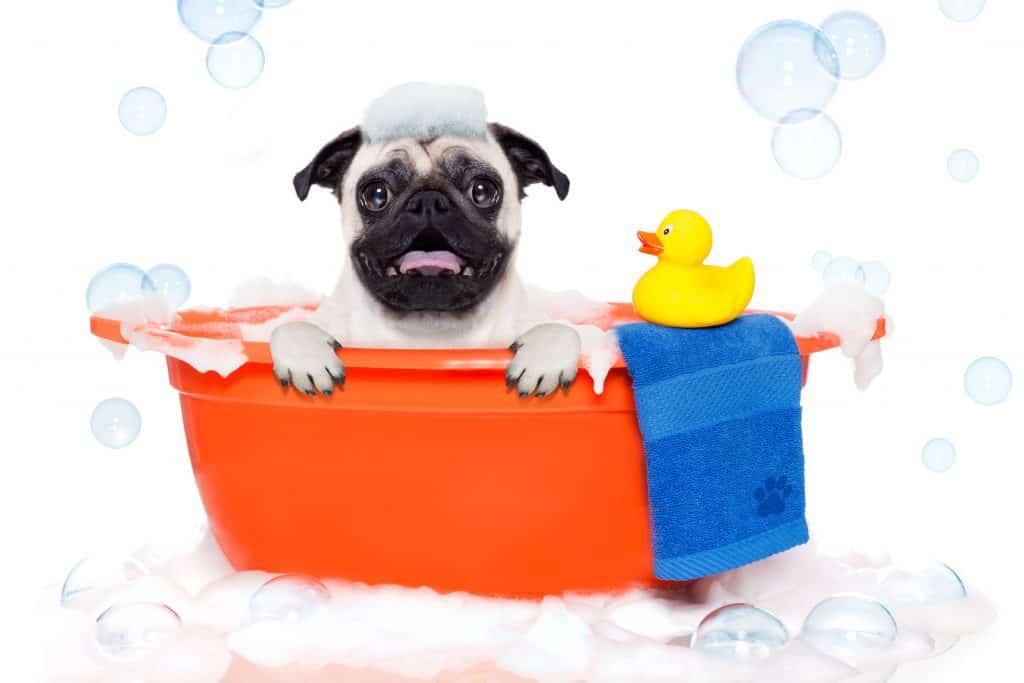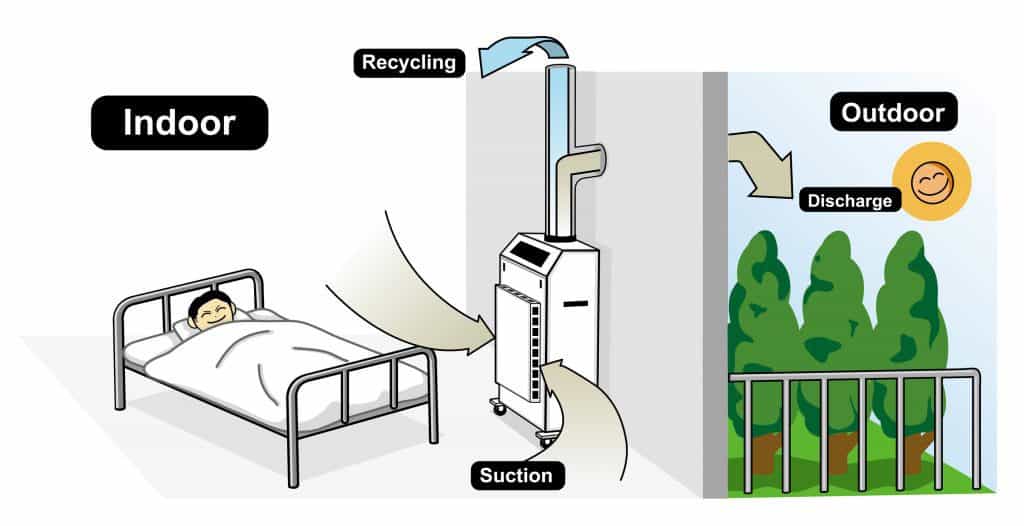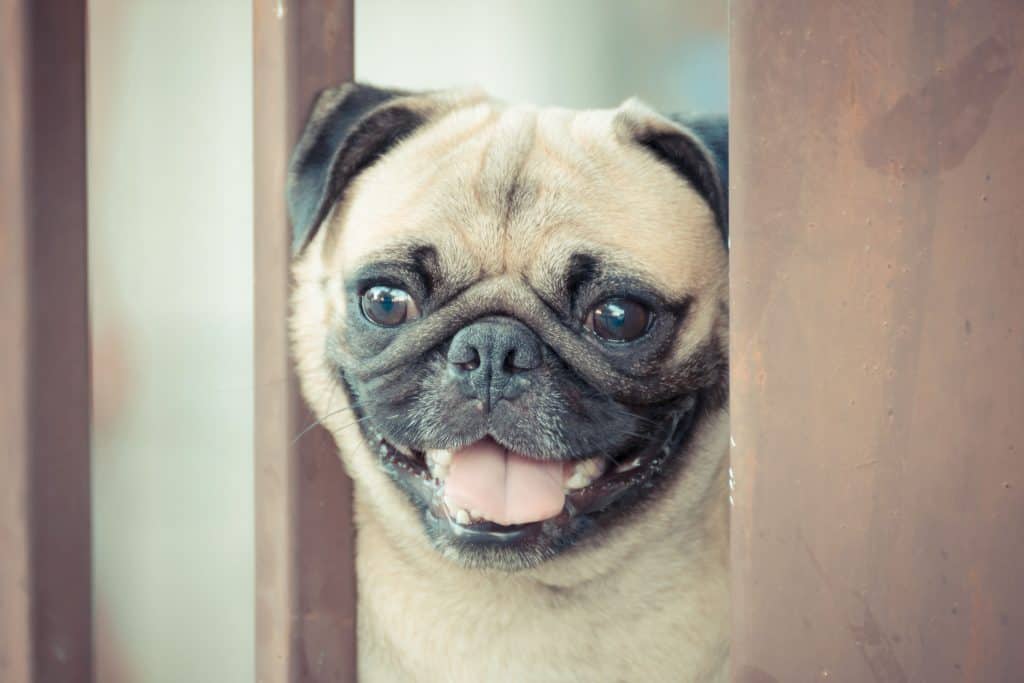Are Pugs Hypoallergenic? Tips for Families with Allergies

I think pugs are cute dogs, and they would be a great dog to get. However, I am concerned about allergies, as I have family members who are allergic to dogs. I decided to research if pugs are hypoallergenic and what can be done if they are not.
So, are pugs hypoallergenic? Pugs are not hypoallergenic, and can, in fact, be pretty bad for people with dog allergies. Their fur and skin can get loose easily, which causes allergic reactions. This can be an issue for some families, depending on the severity of the allergy.
While they are not hypoallergenic, there are still ways to live with a pug, even if you or a family member does have allergies.
Why Are Pugs Not Hypoallergenic?
No dog is actually 100% hypoallergenic. Allergies are often caused by what is called pet dander, which can come from loose skin flakes, and they can be carried by fur, saliva, or any other thing that comes from a dog.
Every dog sheds a little, and dander will get loose. However, some dogs do that less than others.
Dogs that shed less produce less dander, and so some dogs can be called hypoallergenic because they do not shed much. Pugs, however, do shed.
It might seem like because they have shorter fur, they should be less allergenic. However, while fur length may be a contributing factor to allergies, as stated before, dander comes from skin and saliva, and so a pug can still trigger allergic reactions.
Pugs have squishy faces, which is often why people go for them- because they think it’s cute. However, that cute face can be the cause of many problems for someone with dog allergies. The many skin folds contribute to more skin and fur, or dander, getting loose, which will exacerbate allergy symptoms.
If you suffer from symptoms such as sneezing, stuffy or runny noses, watery or itchy eyes, wheezing, coughing, rashes or skin hives when around dogs or pugs, it is likely you are allergic to them. Tests can also be done to determine what you’re allergic to and how badly you are affected.
Even if you are allergic, it doesn’t necessarily mean that you can’t get a pug though if you want one!
If your allergies are not severe, and you take the appropriate measures to be able to live with a dog that is not hypoallergenic, then you may be able to have a great life with your furry companion.
Tips for Allergy Sufferers Living With a Pug
The first thing you should do is figure out how bad your allergies are, by consulting with a doctor or professional. Asking a vet may also be helpful. If you’ve determined or decided that you can handle it, then consider the following options for making life with your pug more manageable.
Keep Your Pug Well-Groomed

If a dog, including a pug, is not well-groomed, it is more likely that dander will get loose. If you’ve ever gone more than a couple days without washing or brushing your hair, then you know how gross it can be and feel, and it seems like your hair falls out much more. Keeping up with your own grooming feels better and lessens hair loss.
The same goes for pugs. By keeping them well-groomed, you are able to stay on top of their shedding, and so the dander can be more controlled.
It’s recommended to brush your pug at least once a week. The more often you do it, the better it will be. Especially brush them if they’ve spent time outside and have gotten dirty.
It would be best to have a family member who is not allergic to brush the dog. Brushing it outside is a good idea as well so that the loose fur that comes from brushing will not get spread all over the house.
When it comes to bathing, it is good to do so at least once every three months. If you don’t do it enough, then you run into the problems mentioned earlier.
However, too much bathing can actually dry up your dog’s skin, and make it release more dander, and it may be unhealthy, so don’t bathe your pug more than is necessary.
Use unscented, hypoallergenic shampoos and soaps when bathing your pug so that your allergic reactions won’t be as bad, or flare up. If you can have another person bathe the dog who isn’t allergic to it, that is a good idea as well.
The skin folds on a pug’s face can contain bacteria, dirt, and of course dander. The folds need to be cleaned thoroughly so as to reduce that allergy-producing dander, and to keep your pug healthy.
You can clean the skin folds with dampened cotton, by using cotton balls or swabs, and wiping the folds with them thoroughly and gently. It may take a couple of run-throughs to get everything.
After wiping the folds down, you can then use a dry and sterile piece of cotton to dry it off, preventing moisture and potentially bacteria, from building up there.
Grooming is step number one. There is often not much point in doing anything else if your pug is not going to be well groomed. Luckily, this breed usually has short hair, which means it takes much less time to groom a pug than some other breeds.
You may be tempted to shave your pug, either to reduce shedding or maybe because it’s hot outside. Some people do this and it turns out okay but is really recommended that you don’t do this.
A pug’s coat is meant to insulate it in winter and summer, keeping it warm in the cold and cool in the heat. Shaving a pug can potentially damage this insulation. It can also make them more susceptible to sunburn and other damage from the sun.
Pugs in heat can especially suffer because of their squished-in faces, as breathing is hard for them. If they are suffering from the heat, the factor of shaved fur can make it worse, so it’s better to just brush and groom your dog regularly and leave the scissors alone.
Have “Pet-Specific” Clothing
Now I’ll be addressing things you can do in your home to help deal with allergies to your pug. One such thing is to have a few outfits that you wear around your dog.
If you don’t want to have allergy-inducing pet dander on your clothes as you leave for work, this is a great idea. You keep your regular clothes in a location your dog can’t reach, and you keep your “dog” clothes in a separate location.
When you are home or interacting with your pug, you can wear these clothes, that way,
Having a lint roller can be a good option for a quick fix, but it isn’t a permanent solution. However, with a separate set of clothes for interacting with your pug, be careful when it comes to washing them.
If you wash these clothes with non-affected clothes, then everything will end up with fur on it. Wash these clothes separately as well, or better yet, take them to the dry cleaners.
This method will help you to keep from sneezing at work, and when you’re out and about, which can make life go much easier!
Get Rid of the Carpet
This option may not always be possible, but if it is, it is highly recommended.
Pet dander gets caught up in the carpet, and it can stay there forever. Simple vacuuming will not pick up everything, you’d need a seriously powerful one to come close. However, wood, tile, or other non-carpet flooring make cleaning up your dog’s fur much easier.
We had cats growing up in my family, and my mother was allergic to them. When we switched to wooden floors, it was much more manageable for her.
We could sweep up the fur, and even vacuum it up, and we picked up much more than the carpet would let us. It was also easier to see if we missed anything.
Without the carpet, the dander won’t get trapped in your house like it’s a museum for allergies. But also remember this applies to carpets and tugs. Those may be easier to clean, but they will trap fur and dander as well.
If your furniture has anything fuzzy, the same rule applies. Sofa covers and plastic wrappings can go a long way in making the fur, and therefore your allergies, easier to deal with.
Use Air Cleaners

Air cleaners and filters are extremely helpful when it comes to dealing with your pug allergies. For pet dander, a HEPA kind is usually recommended. These catch not only dander, but dust and dirt in the air, and filter it out to keep the air pure and clean.
“Let Levoit true HEPA filtration produce clean, fresh air for your home and take care of dust, allergens, bacteria, particles as small as 0.3 microns.”
-Amazon
Some vacuums may also come with HEPA filters, which can be beneficial in two ways, vacuuming and cleaning the air around it.
With cleaner air free of pet dander, it will be easier for you and your family to breathe, even if your pug spends most of its time indoors. It can lessen discomfort, and make it so that you can enjoy being home and not have to suffer from allergies in your own space.
Air filters may not always get everything, but they will certainly go a long way in helping you and your family deal with allergies and be able to enjoy your pug even more.
Have “Pet-Free” Zones in Your Home

This may not always be possible, depending on the size of your home. However, if there are enough rooms or spaces in the home, you can make some of them off-limits to your pug.
Usually, people choose bedrooms or bathrooms as these zones. This will help to keep fur and dander away from these spaces so that when you and other family members go in them, there will be a place to be free of allergy symptoms.
If your pug has free reign, so does its dander. It is good to have a refuge from the allergy-inducing dander. This may also mean you won’t be kept up at night sniffling and suffering because there is dander and fur on your bed.
It may take some time to train a pug to stay away from certain rooms. Doors and patience can go a long way. In the end, it will be worth it so that you can have an escape if allergies ever get overwhelming.
Use Medicine
Having a clean house and clothes, as well as a well-groomed dog can do a lot for you and your family. However, it may not always be enough. Luckily, we live in a world with modern medicine, some of which can help manage the symptoms of allergies.
There are medicines that can treat symptoms, such as runny noses and itchy eyes, and taking a few pills may be enough for some people.
Consult with a doctor before taking anything, just to be safe. But this can be a great way to fight symptoms and find relief. It should not be a substitute for a clean home and a well-groomed pug.
Another medicinal option is to get allergy shots. This is also known as immunotherapy, and it is where you are given a small dose of the allergy through a shot, starting with a week at a time.
This will spread out eventually, as your body starts to build up an immunity. My mother did this to help with her cat allergy, and she was able to be with and pet them more because of it.
Allergy shots may not work for everyone, but they are an option to ask a doctor about and to look into so that you can enjoy being with your pug even more.
Wash Your Hands Frequently
This seems pretty obvious, but surprisingly, people don’t always think of it. Using hand sanitizer may be a quick option, but washing your hands thoroughly after interacting with your pug can be a great help.
My mom could be in the same room as our cats, and even if they touched her leg, she would be fine. The trouble came when she pet or interacted with the cats with her hands and then touched her face. Washing her hands right away helped to lessen this problem.
Use soap and warm water and scrub your hands well. Some people even choose to take a quick shower after playing with their pet, but that’s not always necessary.
Your pug wants to play and interact with you and your family. You don’t have to hold yourself back for fear of allergies. Remembering to wash your hands, and following some of these tips can go a long way. A pug can be a great companion and friend, and allergies don’t have to hinder that.
Related Questions:
Can people be allergic to only certain breeds of dogs? It is possible for allergy symptoms to occur when interacting with some breeds of dogs and not others. The reasons can vary, as some breeds may be better for allergies than others, or perhaps the person is truly not allergic to a certain breed’s dander, but exact reasons for this are often unknown.
Do pugs shed a lot? Some pugs may shed more than others. This is because some may be double-coated, which causes them to shed more, especially as the seasons change. All pugs shed every day, but the shedding can be managed if taken care of properly.
